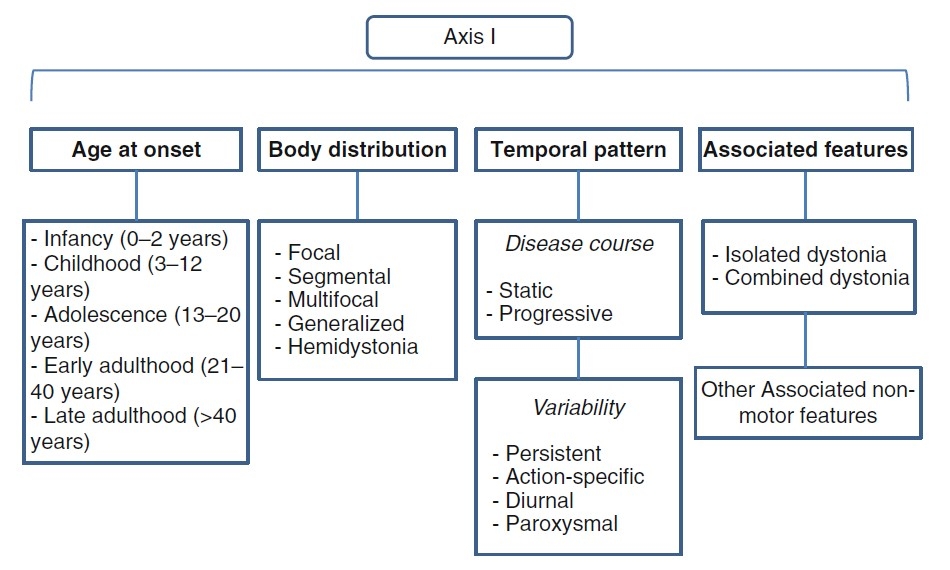There have been rather significant changes, all for the better, in the classification of dystonia.
Note firstly that the following terms are not of great value, or have been discarded:
- Primary and secondary dystonia
- Dystonia-plus
- Heredodegenerative forms of dystonia1.
A 2013 Consensus Statement improved the previous dystonia classification system and now recommends defining dystonia under two axes2:
Axis 1: Clinical features
Axis 2: Aetiology
The aim of the system is that, once a patient is classified phenomenologically according to the first axis (see figure below), a dystonia syndrome may then be defined, which is diagnostically useful3.
Axis I: Clinical Features: Defining the phenomena associated with dystonia
 |
LINKS
|

